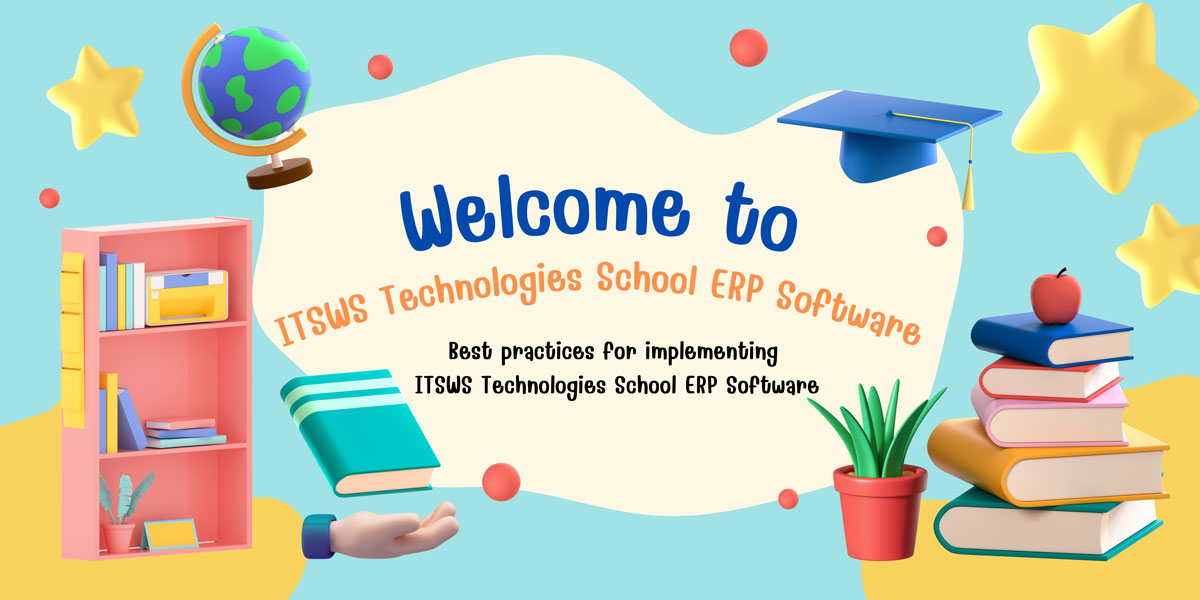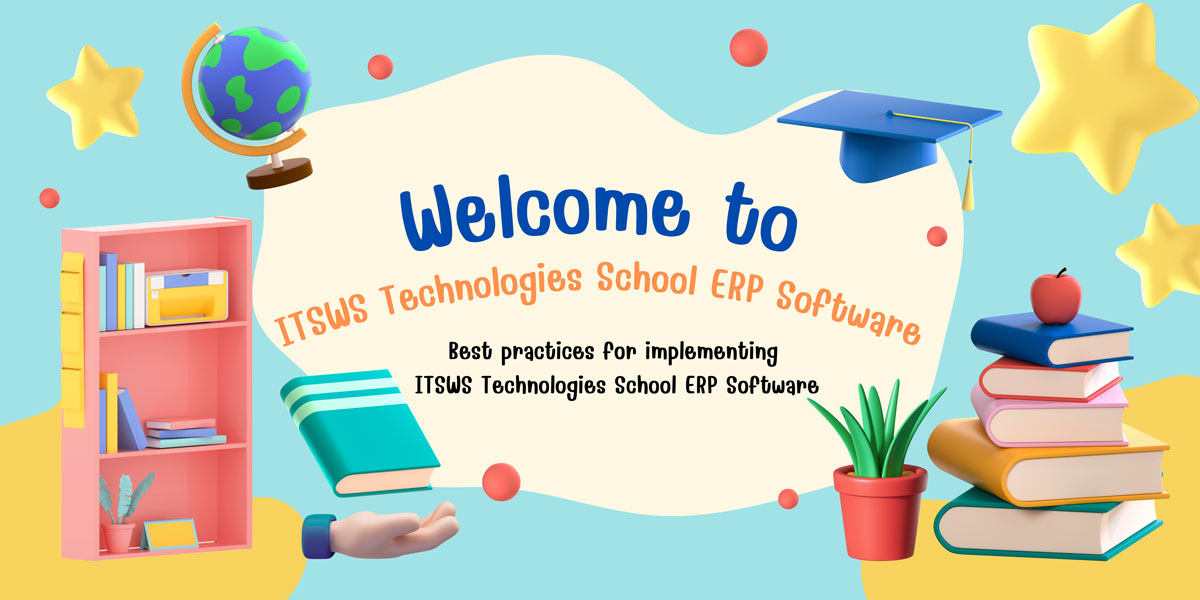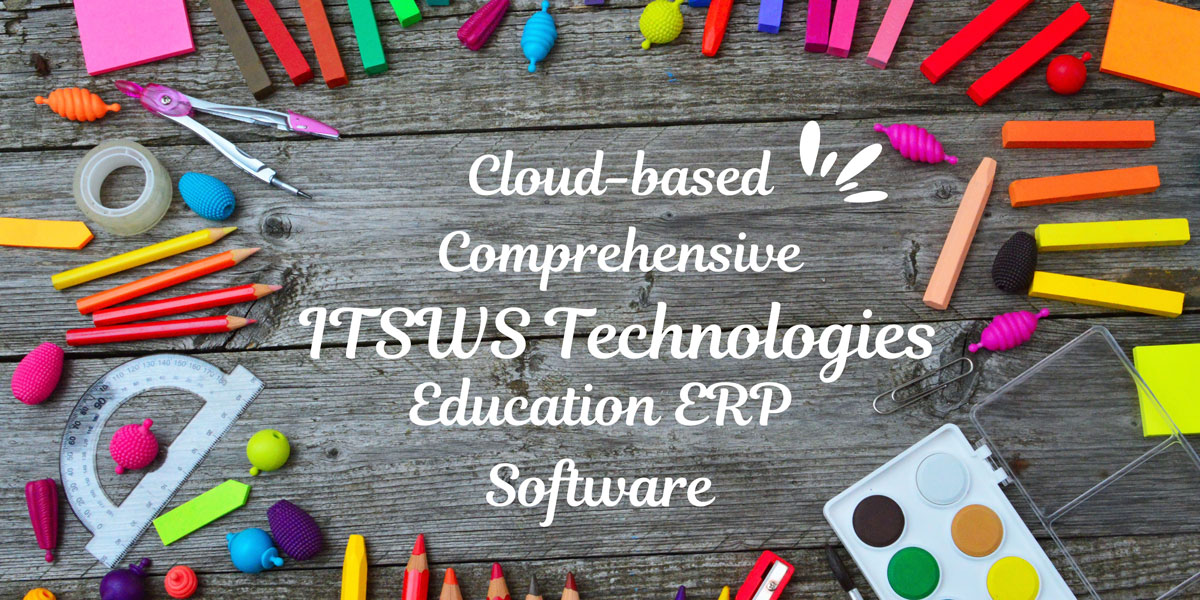Best practices for implementing ITSWS Technologies School ERP Software
ITSWS Technologies Schools ERP Software with scalability and flexibility to accommodate future growth and changes in the school's requirements. This ensures the ERP solution remains effective as the institution evolves.
Best practices for implementing ITSWS Technologies School ERP Software
- Selection of the Right ERP Solution: Choose an ERP solution that is tailored to the specific needs of educational institutions. Look for user-friendly interfaces, scalability, and features that support academic, administrative, and financial functions.
- Customization and Integration: Customize the ERP system to match the unique processes and requirements of the school. Ensure seamless integration with other existing systems, such as student information systems, to avoid data silos and enhance overall efficiency.
- Performance Monitoring and Reporting: Implement tools for monitoring the performance of the ERP system. Develop customized reports to analyze data, track key performance indicators, and make informed decisions.
- Customization for School-Specific Processes: Customize the ERP system to accommodate the unique processes and workflows of the school. Ensure that ITSWS Schools ERP Software is configured to meet the specific needs of academic, administrative, and financial departments.

- Planning and Preparation: Define clear objectives and goals for implementing the ERP system, such as streamlining operations, improving communication, and enhancing educational outcomes.
- Customization and Configuration: Work with the chosen vendor to customize the ERP software to fit your school's specific workflows, processes, and requirements.
- Evaluation and Optimization: Identify opportunities for optimization and enhancement based on user feedback, system usage data, and changing requirements.
- Define Objectives and Goals: Clearly define the objectives and goals you aim to achieve with the implementation of the School ERP Software. Define Key Performance Indicators (KPIs) that align with your objectives and goals.
- Track Costs and Benefits: Calculate the total costs associated with the implementation of the School ERP Software, including software licensing fees, hardware infrastructure costs, implementation expenses, training costs, and ongoing maintenance fees.
- Calculate ROI: Use the formula [(Net Benefits / Total Costs) * 100] to calculate the Return on Investment (ROI) percentage of the School ERP Software implementation.
Recent Posts
As ERP systems become more intelligent, automated, and user-friendly, they will offer businesses unprecedented control over their operations, driving efficiency, scalability, and growth. Industry-specific solutions, advanced analytics, and sustainability-focused ERPs will further ensure that businesses can thrive in an increasingly competitive and data-driven world.
The cloud-based model offers a cost-efficient solution, eliminating the need for extensive on-premises infrastructure. Schools can benefit from flexible pricing models based on actual usage, optimizing costs and resource allocation.
ITSWS School ERP Software offers a comprehensive set of features covering a wide range of functions. It includes modules for student information management, attendance tracking, gradebook management, finance and accounting, human resources, communication tools, and more.
ITSWS Technologies Schools ERP Software with scalability and flexibility to accommodate future growth and changes in the school's requirements. This ensures the ERP solution remains effective as the institution evolves.



